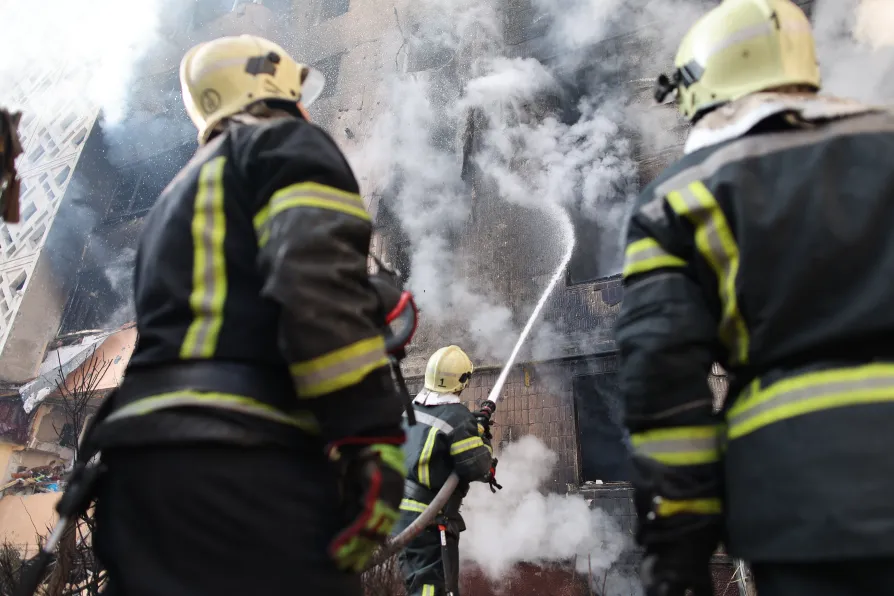
 Rescue workers put out a fire of a residential building which was heavily damaged by a Russian strike, in Ternopil, Ukraine, November 19, 2025
Rescue workers put out a fire of a residential building which was heavily damaged by a Russian strike, in Ternopil, Ukraine, November 19, 2025
EVERYONE must hope that the present talks to end the war between Russia and Ukraine succeed.
It is a conflict that has cost perhaps half a million lives with many more injured, driven millions more into exile and wreaked havoc with the economy and infrastructure in Ukraine and, to a lesser extent, Russia.
International relations have been destabilized and the conflict has become a proxy for a larger confrontation between the US-dominated Nato powers and Russia, with behind it China, the most comprehensive challenger to the Washington-dominated world order.
Peace plans are now circulating, with a 28-point proposal seen as too “pro-Moscow” apparently superseded by a 19-point plan drawn up with input from Kiev and the European powers.
The sticking points are what they largely were nearly four years ago, before the Russian invasion — territorial demarcation, the expansion of Nato, the rights of Russian-speaking people, the sovereignty of Ukraine and the deployment of foreign troops into its territory.
The left and the anti-war movement should avoid any temptation to conduct a running commentary on the details. It should rather champion some broad principles and, above all, confront the conduct of the British and US governments.
US President Donald Trump appears to be motivated by two main factors in pushing for peace. The first is that he is intent on looting Ukraine’s economy, a priority fully reflected in his original proposals. To make the most of Ukraine’s resources, a cessation of hostilities is required.
This banditry exposes the fiction that Ukraine enjoys full sovereignty today. It is entirely beholden to Washington, and has to swallow any amount of humiliations and asset-stripping to keep its mercurial president onside.
Secondly, it is clear that Ukraine is losing ground militarily, albeit slowly. Russia has made no strategic breakthrough, but the military momentum is all one way.
Ukraine is buffeted by an all-enveloping corruption scandal — far from its first — and is having great difficulty in replenishing the ranks of its armed forces. If one army is to collapse, it is far more likely to be the Ukrainian.
That would open the way to far more sweeping Russian annexations in the east, centre and south of the country, to the detriment of US interests.
Yet that does not stop Keir Starmer manoeuvring for a prolongation of the war. He is in the van of those advancing demands which are obstructions to any viable peace plan.
Foremost among those is a proposal to deploy British and French troops to Ukraine to police any ceasefire that may be agreed. That clearly crosses one of Russia’s red lines, since it means Nato involvement in Ukraine under the thinnest of disguises.
Such a “coalition of the willing” force would be unable to function without US intelligence and logistical support, and without a guarantee that Washington would come to its rescue in the event of a return to hostilities, which either side could trigger.
So Nato forces would be deployed with Nato back-up, armed with Nato munitions and buttressed with Nato-style guarantees. Yet the expansion of Nato was one of the main, and the most cogent, of Vladimir Putin’s justifications for his 2022 invasion, wrong as that illegal action remains.
Starmer prefers to expend millions on prolonging a war which he hopes will leave Nato ascendant, Russia weakened and China’s influence diminished. And he is handing over billions every year to that end, domestic budget stringency notwithstanding.
The labour movement needs to move on from their passive approach to this war and to recognise that a lasting peace settlement is in its own interests. It should tell Keir Starmer to get out of the way.














